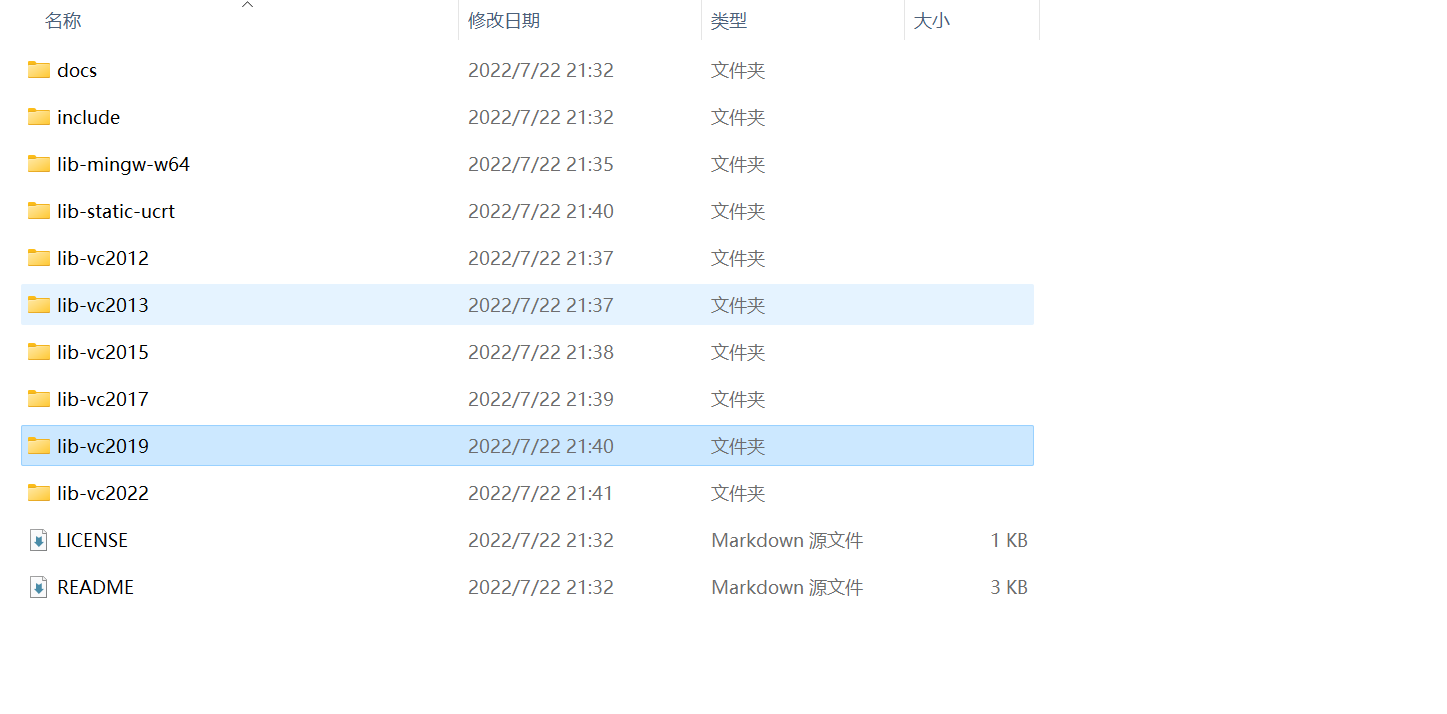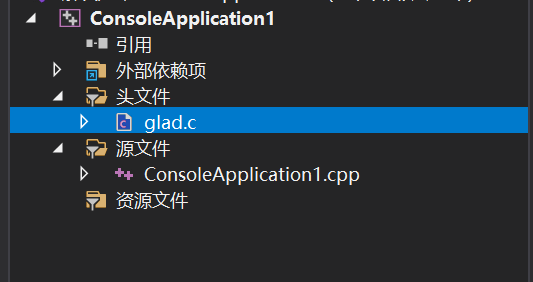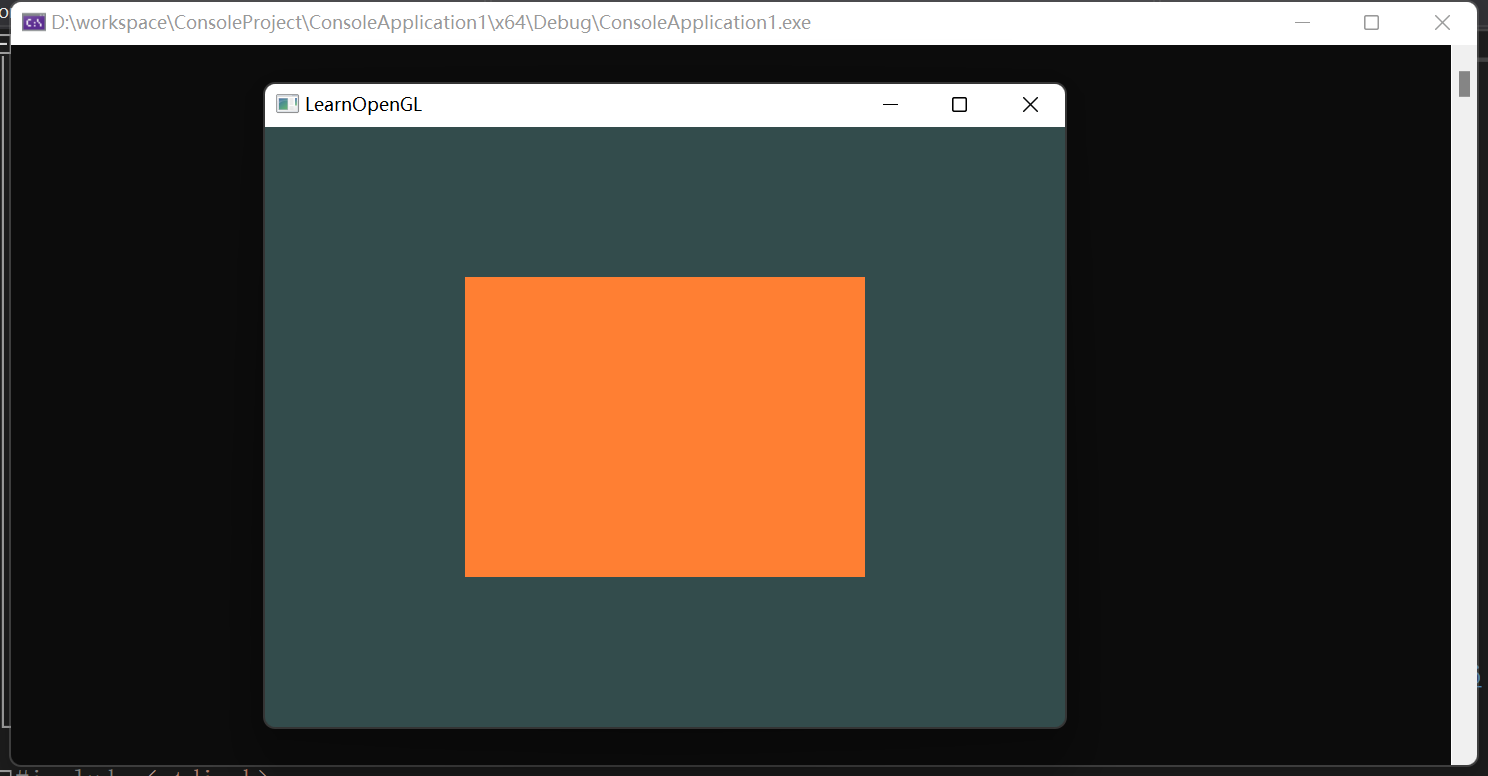百度有个学习的网站建设叫什么免费推广公司
方法一:
1.下载GLFW
点击GLFW跳转

2.下载后解压

3.下载glad,解压后



4.用vs2019新建Cmake项目

5.在新建的Cmake项目下建立depend文件夹

在depend里放置我们下载解压的glad和glfw-3.3.8.bin.WIN64

6.项目中可以看到我们加进来的文件


7.编写我们项目的CMakeLists.txt,把我们的头文件和lib库加进来

8.运行程序
cmakelist中已经把glad.h路径定到了/depend/glad/include/,所以我们下面的头文件直接从include下的glad查询就好了,即#include<glad/glad.h>;同理glfw3.h的路径已经定到了/depend/glfw-3.3.8.bin.WIN64/include/,所以我们下面的头文件直接从include下的GLFW开始就好了,即#include<GLFW/glfw3.h>


方法二:
用vs2019新建控制台应用

在项目下新建文件夹depend

depend中包含include、lib、src
include内容来自方法一中glad和glfw-3.3.8.bin.WIN64中include下
lib内容来自方法一中glfw-3.3.8.bin.WIN64中lib-vc2019下
src内容来自方法一中glad下

右键项目点击属性设置VC++目录下的“包含目录”和“库目录”

然后在“链接器”下的“输入”设置“附加依赖项”,加入glfw3.lib和opengl32.lib

右键头文件,将/depend/src/glad.c加入头文件中

编译运行

测试代码:
#include <glad/glad.h>
#include <GLFW/glfw3.h>#include <iostream>void framebuffer_size_callback(GLFWwindow* window, int width, int height);
void processInput(GLFWwindow* window);// settings
const unsigned int SCR_WIDTH = 800;
const unsigned int SCR_HEIGHT = 600;const char* vertexShaderSource = "#version 330 core\n"
"layout (location = 0) in vec3 aPos;\n"
"void main()\n"
"{\n"
" gl_Position = vec4(aPos.x, aPos.y, aPos.z, 1.0);\n"
"}\0";
const char* fragmentShaderSource = "#version 330 core\n"
"out vec4 FragColor;\n"
"void main()\n"
"{\n"
" FragColor = vec4(1.0f, 0.5f, 0.2f, 1.0f);\n"
"}\n\0";int main()
{// glfw: initialize and configure// ------------------------------glfwInit();glfwWindowHint(GLFW_CONTEXT_VERSION_MAJOR, 3);glfwWindowHint(GLFW_CONTEXT_VERSION_MINOR, 3);glfwWindowHint(GLFW_OPENGL_PROFILE, GLFW_OPENGL_CORE_PROFILE);#ifdef __APPLE__glfwWindowHint(GLFW_OPENGL_FORWARD_COMPAT, GL_TRUE);
#endif// glfw window creation// --------------------GLFWwindow* window = glfwCreateWindow(SCR_WIDTH, SCR_HEIGHT, "LearnOpenGL", NULL, NULL);if (window == NULL){std::cout << "Failed to create GLFW window" << std::endl;glfwTerminate();return -1;}glfwMakeContextCurrent(window);glfwSetFramebufferSizeCallback(window, framebuffer_size_callback);// glad: load all OpenGL function pointers// ---------------------------------------if (!gladLoadGLLoader((GLADloadproc)glfwGetProcAddress)){std::cout << "Failed to initialize GLAD" << std::endl;return -1;}// build and compile our shader program// ------------------------------------// vertex shaderunsigned int vertexShader = glCreateShader(GL_VERTEX_SHADER);glShaderSource(vertexShader, 1, &vertexShaderSource, NULL);glCompileShader(vertexShader);// check for shader compile errorsint success;char infoLog[512];glGetShaderiv(vertexShader, GL_COMPILE_STATUS, &success);if (!success){glGetShaderInfoLog(vertexShader, 512, NULL, infoLog);std::cout << "ERROR::SHADER::VERTEX::COMPILATION_FAILED\n" << infoLog << std::endl;}// fragment shaderunsigned int fragmentShader = glCreateShader(GL_FRAGMENT_SHADER);glShaderSource(fragmentShader, 1, &fragmentShaderSource, NULL);glCompileShader(fragmentShader);// check for shader compile errorsglGetShaderiv(fragmentShader, GL_COMPILE_STATUS, &success);if (!success){glGetShaderInfoLog(fragmentShader, 512, NULL, infoLog);std::cout << "ERROR::SHADER::FRAGMENT::COMPILATION_FAILED\n" << infoLog << std::endl;}// link shadersunsigned int shaderProgram = glCreateProgram();glAttachShader(shaderProgram, vertexShader);glAttachShader(shaderProgram, fragmentShader);glLinkProgram(shaderProgram);// check for linking errorsglGetProgramiv(shaderProgram, GL_LINK_STATUS, &success);if (!success) {glGetProgramInfoLog(shaderProgram, 512, NULL, infoLog);std::cout << "ERROR::SHADER::PROGRAM::LINKING_FAILED\n" << infoLog << std::endl;}glDeleteShader(vertexShader);glDeleteShader(fragmentShader);// set up vertex data (and buffer(s)) and configure vertex attributes// ------------------------------------------------------------------float vertices[] = {0.5f, 0.5f, 0.0f, // top right0.5f, -0.5f, 0.0f, // bottom right-0.5f, -0.5f, 0.0f, // bottom left-0.5f, 0.5f, 0.0f // top left };unsigned int indices[] = { // note that we start from 0!0, 1, 3, // first Triangle1, 2, 3 // second Triangle};unsigned int VBO, VAO, EBO;glGenVertexArrays(1, &VAO);glGenBuffers(1, &VBO);glGenBuffers(1, &EBO);// bind the Vertex Array Object first, then bind and set vertex buffer(s), and then configure vertex attributes(s).glBindVertexArray(VAO);glBindBuffer(GL_ARRAY_BUFFER, VBO);glBufferData(GL_ARRAY_BUFFER, sizeof(vertices), vertices, GL_STATIC_DRAW);glBindBuffer(GL_ELEMENT_ARRAY_BUFFER, EBO);glBufferData(GL_ELEMENT_ARRAY_BUFFER, sizeof(indices), indices, GL_STATIC_DRAW);glVertexAttribPointer(0, 3, GL_FLOAT, GL_FALSE, 3 * sizeof(float), (void*)0);glEnableVertexAttribArray(0);// note that this is allowed, the call to glVertexAttribPointer registered VBO as the vertex attribute's bound vertex buffer object so afterwards we can safely unbindglBindBuffer(GL_ARRAY_BUFFER, 0);// remember: do NOT unbind the EBO while a VAO is active as the bound element buffer object IS stored in the VAO; keep the EBO bound.//glBindBuffer(GL_ELEMENT_ARRAY_BUFFER, 0);// You can unbind the VAO afterwards so other VAO calls won't accidentally modify this VAO, but this rarely happens. Modifying other// VAOs requires a call to glBindVertexArray anyways so we generally don't unbind VAOs (nor VBOs) when it's not directly necessary.glBindVertexArray(0);// uncomment this call to draw in wireframe polygons.//glPolygonMode(GL_FRONT_AND_BACK, GL_LINE);// render loop// -----------while (!glfwWindowShouldClose(window)){// input// -----processInput(window);// render// ------glClearColor(0.2f, 0.3f, 0.3f, 1.0f);glClear(GL_COLOR_BUFFER_BIT);// draw our first triangleglUseProgram(shaderProgram);glBindVertexArray(VAO); // seeing as we only have a single VAO there's no need to bind it every time, but we'll do so to keep things a bit more organized//glDrawArrays(GL_TRIANGLES, 0, 6);glDrawElements(GL_TRIANGLES, 6, GL_UNSIGNED_INT, 0);// glBindVertexArray(0); // no need to unbind it every time // glfw: swap buffers and poll IO events (keys pressed/released, mouse moved etc.)// -------------------------------------------------------------------------------glfwSwapBuffers(window);glfwPollEvents();}// optional: de-allocate all resources once they've outlived their purpose:// ------------------------------------------------------------------------glDeleteVertexArrays(1, &VAO);glDeleteBuffers(1, &VBO);glDeleteBuffers(1, &EBO);glDeleteProgram(shaderProgram);// glfw: terminate, clearing all previously allocated GLFW resources.// ------------------------------------------------------------------glfwTerminate();return 0;
}// process all input: query GLFW whether relevant keys are pressed/released this frame and react accordingly
// ---------------------------------------------------------------------------------------------------------
void processInput(GLFWwindow* window)
{if (glfwGetKey(window, GLFW_KEY_ESCAPE) == GLFW_PRESS)glfwSetWindowShouldClose(window, true);
}// glfw: whenever the window size changed (by OS or user resize) this callback function executes
// ---------------------------------------------------------------------------------------------
void framebuffer_size_callback(GLFWwindow* window, int width, int height)
{// make sure the viewport matches the new window dimensions; note that width and // height will be significantly larger than specified on retina displays.glViewport(0, 0, width, height);
}